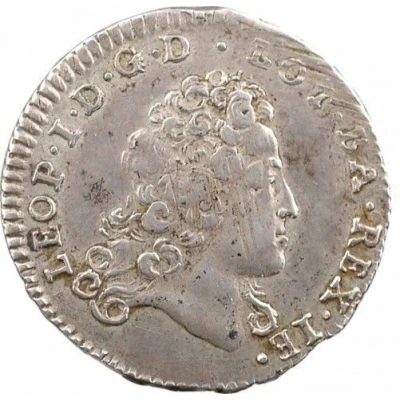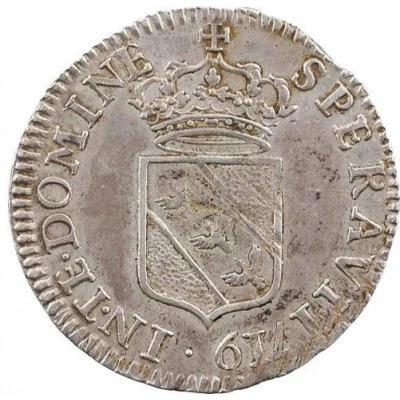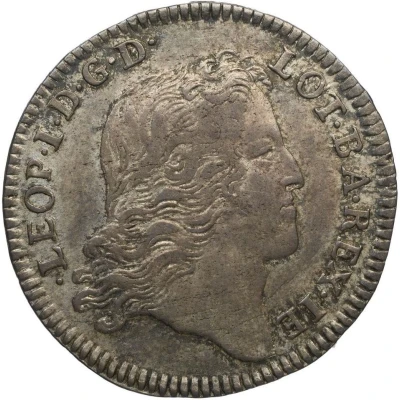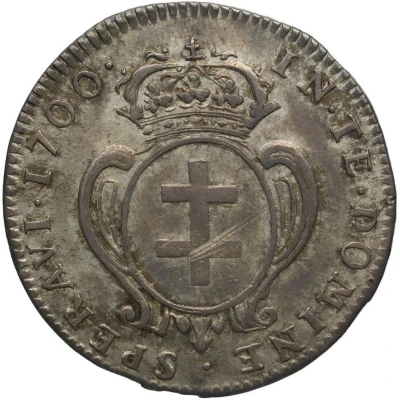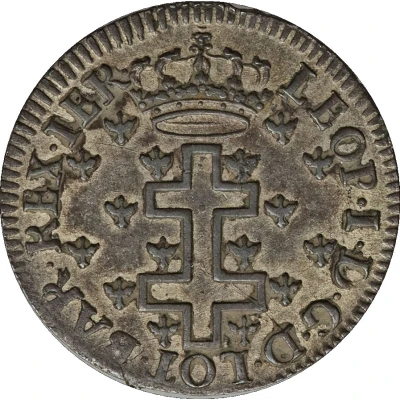
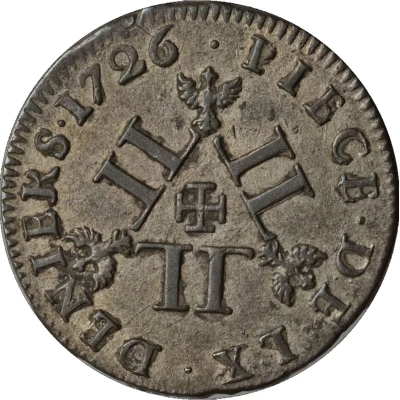

© Heritage Auctions
60 Deniers - Leopold I
1726 year| Billon (.166 silver) | 5.6 g | 25 mm |
| Issuer | Duchy of Lorraine (French States) |
|---|---|
| Duke | Leopold (1697-1729) |
| Type | Standard circulation coin |
| Year | 1726 |
| Value | 60 Deniers (¼) |
| Currency | Pound of Lorraine (1700-1737) |
| Composition | Billon (.166 silver) |
| Weight | 5.6 g |
| Diameter | 25 mm |
| Shape | Round (irregular) |
| Technique | Milled |
| Orientation | Coin alignment ↑↓ |
| Demonetized | Yes |
| Updated | 2024-10-04 |
| Numista | N#86395 |
|---|---|
| Rarity index | 92% |
Reverse
3 groups of two joint L (one inversed L and one regular L) joint each other to form a triangle which have an alerion on each angle and surrounding a Cross of Jerusalem.
Script: Latin
Lettering: · Piece · de · LX · deniers · 1726
Translation: Coin of 60 Deniers.
Edge
Plain
Comment
Leopold I is the son of Charles V (1642-1690), a lackland duke. Unlike his father, he managed taking back his Duchy after the Ryswick treatees signed on October 30th, 1697. The following year he spoused Charlotte of Orleans, niece of Louis XIV of France, making Leopold I torn in two, between his 2 families: in one side, the French reigning family of his wife, and in the other side, his own family, whose uncle and cousins ruled over the Archiduchy of Austria and as Holy Roman Emperors.This coin denomination is written in French, proof of the growing influence of the Kingdom of France over Lorraine.
Even Lorraine was simply a Duchy, the Duke Leopold Ier wore the title of King on his coins, claiming himself heir of Godefroy de Bouillon, former King of Jerusalem. This also explains the use of a Cross of Jerusalem on the reverse inside the L triangle.
Interesting fact
One interesting fact about the 60 Deniers - Leopold I 1726 coin from the Duchy of Lorraine is that it was minted during a time of great economic and political change in Europe. The coin was issued during the reign of Leopold I, who was the Duke of Lorraine from 1723 to 1729. During this period, the Duchy of Lorraine was facing significant economic challenges, including a severe debt crisis and a decline in trade. Despite these challenges, the minting of this coin suggests that the Duchy was still capable of producing high-quality currency, which speaks to the resilience and resourcefulness of the people of Lorraine during this time.
